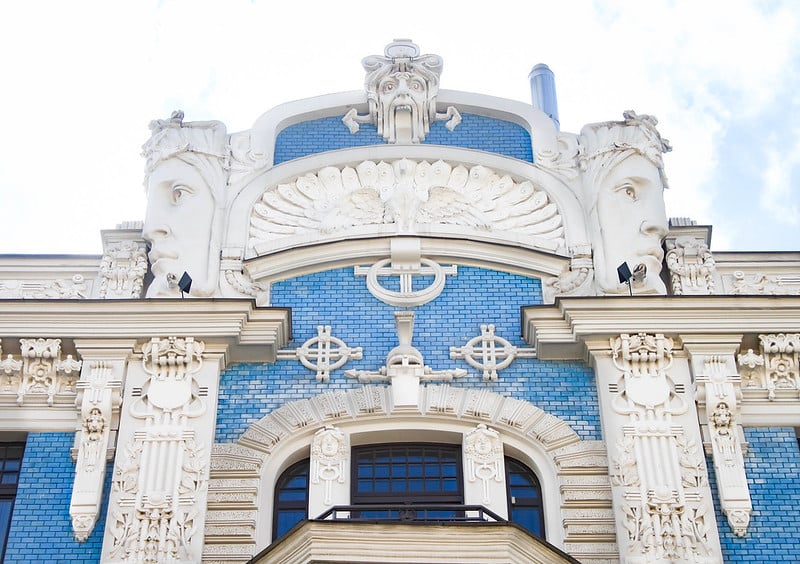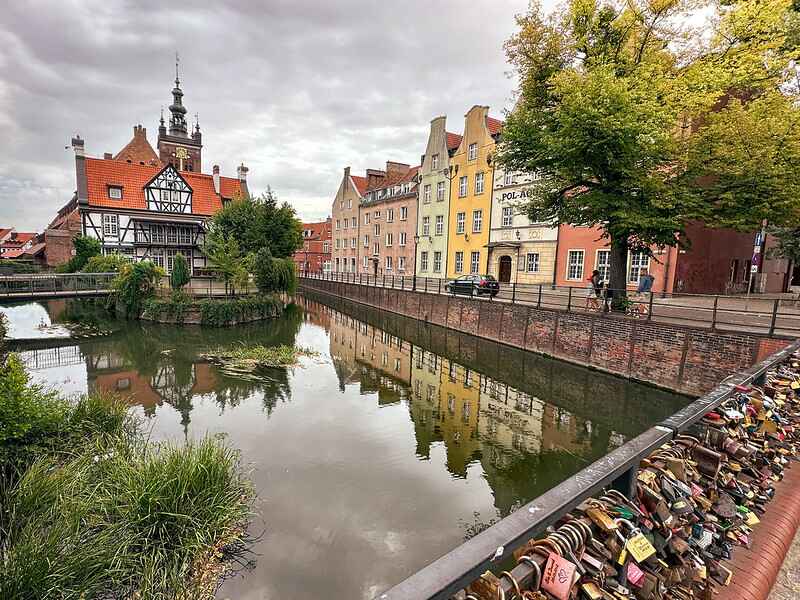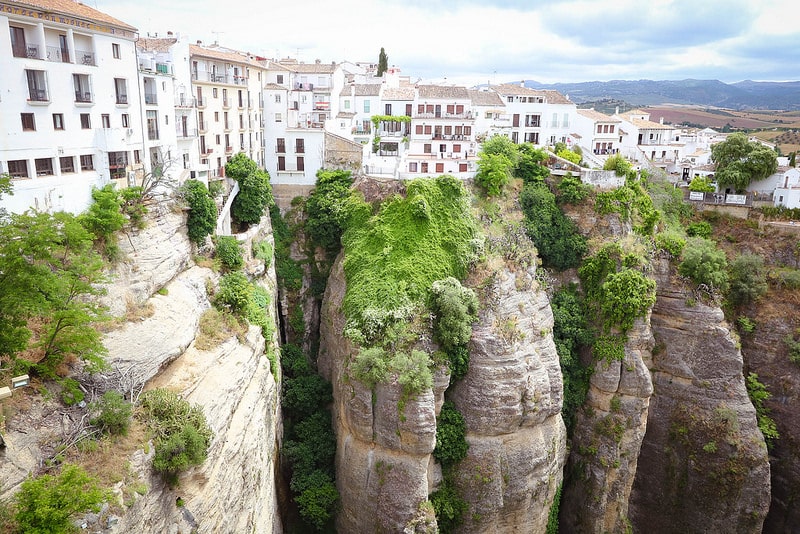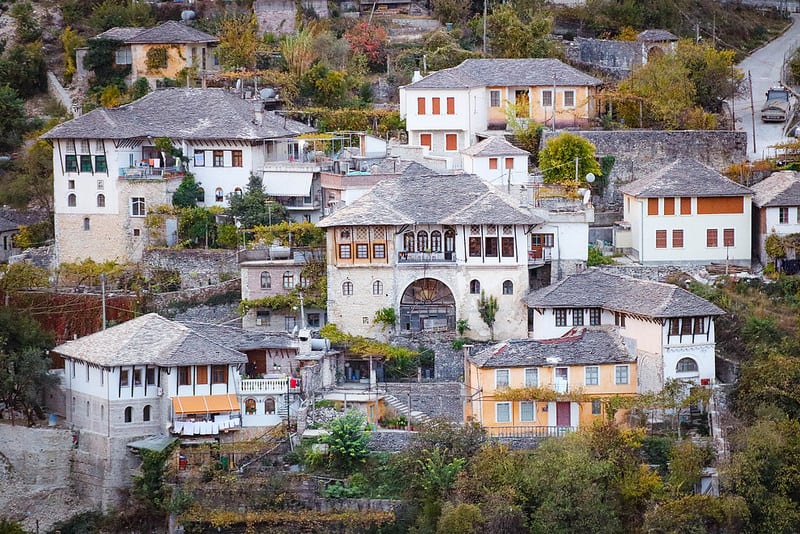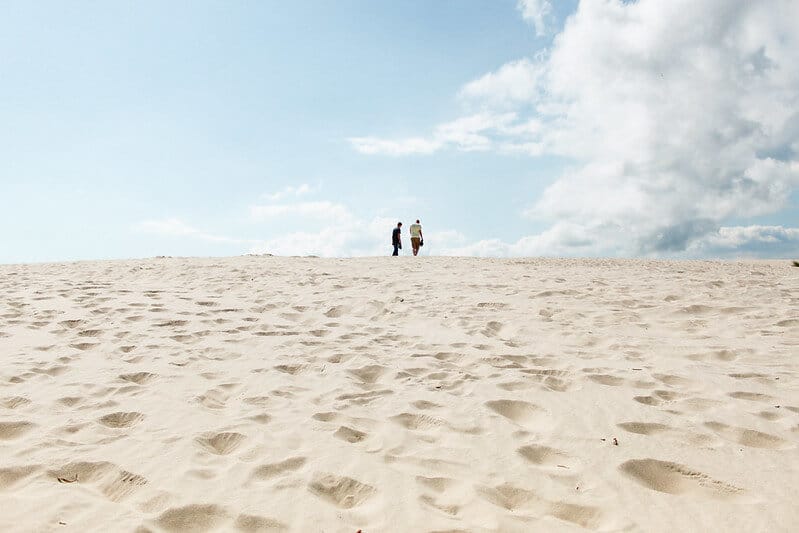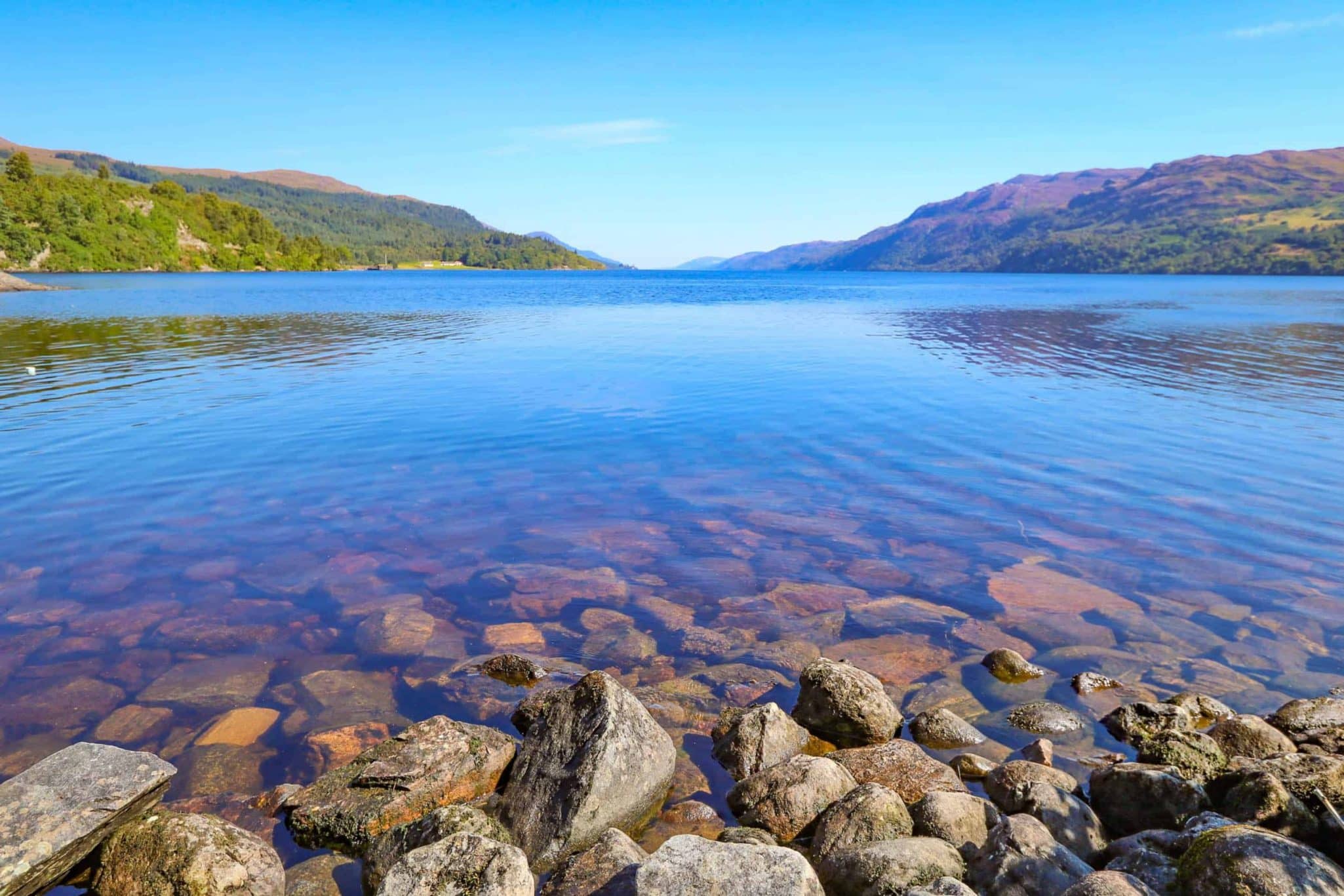27 magical places to spend winter in Europe
I’ve lived in Europe my whole life, and winter has always been a big part of it. Up here in Denmark, it’s cold, dark, and windy—but it’s also a season that feels alive and cozy. Streets glow with Christmas lights, markets fill every square, and kids talk about Santa living in Lapland or Greenland (huge discussion).
I’ll be honest—I’m not thrilled about bundling up for months on end. But I’ve grown to appreciate how winter changes this continent. Some places become quieter and more peaceful, while others come alive with festivals, skiing, or northern lights overhead.
That’s why I pulled together this list: not just the obvious spots, but the ones I think are worth experiencing when Europe is at its coldest. If you’re thinking about visiting Europe in winter, here are 27 places I’d actually recommend—based on what I’ve seen, where I’ve frozen, and where I’ve been surprised.
This post contains referral links for products I love. Adventurous Miriam earns a small commission at no extra cost to you if you purchase through my links. I appreciate your support ♡ Learn more
Winter in Europe: Temperatures and what to expect
Winter in Europe means snowy peaks, twinkling Christmas markets, and cozy city breaks. Up north you’ll get full-on snow scenes, in the Alps (and Norway) it’s ski season, and further south it’s more about crisp days and fewer crowds.
Here’s how the temperatures usually stack up:
- Southern Europe (Spain, Italy, Greece): 5°C to 15°C (41–59°F) — cool, damp, mountain snowChristmas Markets and Festive Celebrations
- Northern Europe (Scandinavia, Baltics): –10°C to 5°C (14–35°F) — long nights, heavy snow
- Eastern Europe (Poland, Czechia, Russia): –5°C to 5°C (23–41°F) — cold and snowy
- Central Europe (Germany, Austria, Switzerland): –2°C to 6°C (28–43°F) — great for skiing, frosty cities
- Western Europe (UK, France, Netherlands): 2°C to 8°C (36–46°F) — milder, wetter, less snow
Christmas markets and festive celebrations
1. Colmar, France
Colmar goes all in on Christmas. Check out my post about Colmar in winter to find the best reasons to visit!
The old town turns into a giant market, with stalls tucked into every corner. You can wander for hours just eating pretzels and warming your hands on mulled wine. It’s busy, but it doesn’t feel fake—locals come out too, and that keeps it fun.
When to go: Late November to Christmas Eve.
Experience Christmas: Alsatian Villages and Colmar Christmas Markets

2. Hallstatt, Austria
Hallstatt is a fairytale town. It’s tiny, so you can walk through the whole town in less than an hour.
Most people visit in summer. But in winter, when the lake steams in the cold and the mountains loom overhead, it feels worth the effort to get there. The view is unbeatable.
Tip: Stay overnight. Once the day-trippers leave, it finally feels like a village again. Or if you have limited time, pre-book a tour to Hallstatt and Saltmine tour from Salzburg.

3. Vienna, Austria
Vienna is one of those cities that just fits winter. The Christmas markets are everywhere—big, small, crowded, quiet. If you prefer smaller – go for the Spittelberg market rather than the massive one at Rathausplatz. It feels more local, and you can actually move without bumping into a hundred people.
What I’d do: Pick one big market for the atmosphere, then find a smaller one to enjoy without stress.
Book now: Vienna Christmas Markets Tour with local snacks

4. Nuremberg
Nuremberg is the Christmas market king. The Christkindlesmarkt lights up the Hauptmarkt with wooden stalls selling gingerbread, roasted almonds, bratwurst, and glühwein.
The medieval city walls and castle are dusted with snow—it feels like stepping into a fairy-tale. Try the local Nürnberger Lebkuchen and watch the festive parade that kicks off Advent.
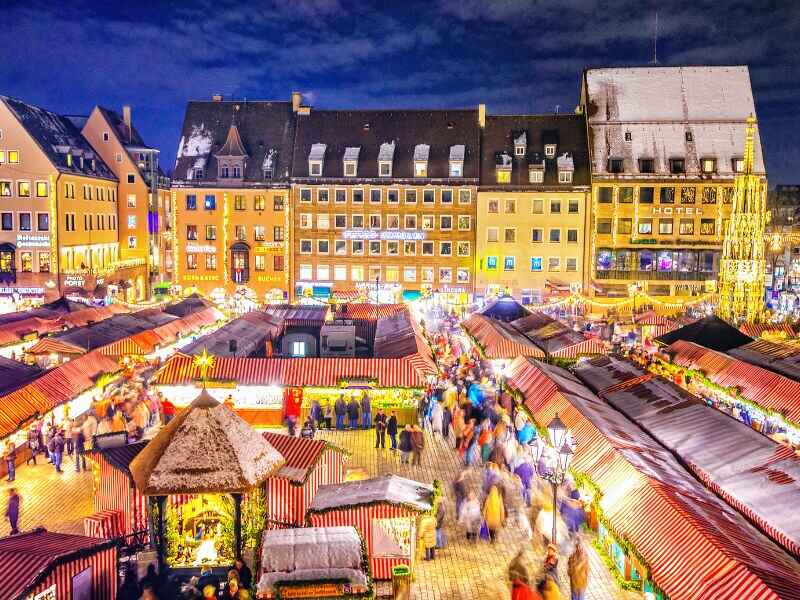
5. Riga
Riga’s old town glows in winter: cobblestone streets, ice-skating rinks, and hearty food everywhere.
There are several Christmas markets clustered around Dome Square, offering smoked fish, rye bread, mittens, and Riga Black Balsam to warm you up. When the Christmas tree goes up in town square, there’s music, lights, and enough mulled wine to make you linger.
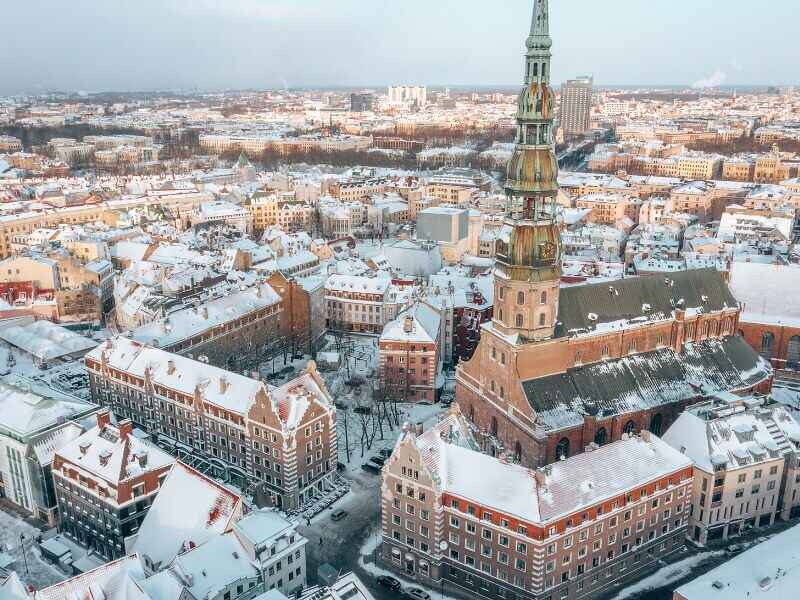
6. Bruges, Belgium
Bruges feels built for winter.
The market in the main square, the canals lit up at night, the smell of waffles in the air—it’s the kind of place where you don’t mind being outside even when your nose is frozen.
Must try: Belgian hot chocolate. It’s basically liquid dessert.
Try this: Chocolate Workshop at Choco-Story Brugge

7. Tallinn, Estonia
Tallinn in winter is brutally cold, but it’s one of the most atmospheric cities in Europe.
The old town walls, snow on the rooftops, the smell of mulled wine at the Christmas market—it all feels authentic, not staged. Totally worth freezing your fingers.
Book now: Tour of Tallinn Old Town and Bastion Tunnels

8. Edinburgh, Scotland (Hogmanay)
Hogmanay is probably the most chaotic New Year’s Eve you’ll ever experience. Edinburgh fills with people, there are torchlight parades through the city, and fireworks go off above the castle at midnight. It might be cold, wet, and crowded, but the energy is incredible.
Plan ahead: Tickets and hotels sell out fast.
Don’t miss: Edinburgh Full Day Walking Tour with Castle -Small Group

9. Cesky Krumlov, Czech Republic
Cesky Krumlov is like Prague’s little sibling, but without the stress.
The castle is impressive, the river winds through the town, and the streets are perfect for aimless wandering. It’s not flashy, but it feels more personal than bigger cities.
Getting there: Three hours by bus from Prague.
Book now: Cesky Krumlov Old Town Private Walking Tour

10. Cologne, Germany
Cologne takes Christmas markets seriously. There are several, and hopping between them is half the fun.
The one under the cathedral is dramatic but also crowded. Try the smaller markets by the river—they’re easier to enjoy without shoving your way through.
Eat this: Reibekuchen (fried potato pancakes with apple sauce). Greasy and perfect.
Book here: Cologne Christmas Lights guided bike tour

Northern lights and unique winter landscapes
11. Tromsø, Norway
Tromsø is one of the best places to see the northern lights. You can spend a few nights there and see them several times —it doesn’t get old, no matter how many photos you take.
By day, you can go dog sledding, snowmobiling, or just sit in a café and watch the snow pile up outside.
Best time: November to March.
Book a unique experience: Northern Lights tour – All inclusive

12. Reykjavik, Iceland
Reykjavik makes a great base. I’ve driven out from there to frozen waterfalls, the Blue Lagoon, and even a glacier lagoon.
Seeing the northern lights is a bonus if the sky clears, but the landscapes alone make the trip worthwhile.
Driving tip: Rent a 4×4. Icelandic winter roads aren’t forgiving.
Book now: #1 Northern Lights Tour from Reykjavik with PRO photos

13. Rovaniemi, Finland
Rovaniemi leans hard into its Santa branding.
Reindeer rides, Santa’s office, snow villages—it’s built for families. But even if that’s not your thing, the northern lights tours and Arctic saunas keep it interesting for adults.
Book now: Northern Lights Rovaniemi: Guaranteed Viewing

14. Lofoten Islands, Norway
Lofoten is dramatic.
Steep mountains, tiny red fishing cabins, and when the auroras appear, it feels unreal. The downside? The weather is wild and unpredictable.
Bring waterproof boots. You’ll thank me later.
Book here: Lofoten Islands: Guided Snowshoeing Tour – Easy version

15. Cappadocia, Turkey
Cappadocia is magical no matter which season you visit!
However, the rock formations look completely different covered in snow, and if you’re lucky with the weather, the hot air balloons fly over the frosted valleys.
Tip: Book two mornings for a balloon ride. Cancellations happen often.
Book here: Cappadocia Hot Air Balloon Tour Over Fairychimneys

16. Neuschwanstein Castle, Germany
Neuschwanstein is crowded and touristy, but snow does make it more interesting. Hiking up to the Marienbrücke viewpoint with icy paths can be sketchy, but the view is the one you’ve seen in a million photos—except real.
Book here: VIP Day Trip Neuschwanstein and Linderhof Castle from Munich

17. Abisko, Sweden
Abisko is about as remote as it gets, but that’s why it works.
The skies are famously clear, so your odds of seeing the aurora are high. There’s not much else going on, so it’s quiet. Sometimes winter travel is about slowing down, not running around.
Getting there: Fly into Kiruna, then take the train.
Book here: Morning hike in Abisko National Park

Skiing and winter sports
18. Interlaken, Switzerland
Interlaken is for people who want options.
Yes, you can ski, but you can also paraglide, snowboard, or just sit by the lakes and take in the mountain views. I visited Jungfraujoch in the summer and still almost froze my face off—but seeing the Top of Europe was worth it.
Book here: Jungfraujoch Top of Europe Day Trip from Interlaken

19. Kitzbühel, Austria
Kitzbühel is polished and classic.
The town is historic, the skiing is serious, and the Hahnenkamm downhill race gives it extra prestige.

20. Val d’Isère, France
Val d’Isère is busy and pricey, but the skiing is as good as it gets. The runs are endless, the après-ski is buzzing, and the snow is reliable. If you want a big resort with everything, this is it.

21. Val Thorens, France
Val Thorens is Europe’s highest ski resort, which means snow is pretty much guaranteed. It’s modern and convenient—you can ski from your hotel door—but don’t expect much charm. The crowd is young and loud, so it depends if that’s your thing.

22. Bad Gastein, Austria
Bad Gastein mixes skiing with spa culture. You can spend half your time on the slopes and the other half soaking in mineral baths with snow falling around you. It’s not glamorous, but it’s relaxing, and I prefer that balance over endless skiing any day.

Alternative winter destinations
23. Krakow, Poland
Krakow’s Rynek Glówny becomes a glowing hub of winter magic. Historic architecture, horse-drawn carriages, and the smell of pierogi, oscypek, and mulled wine drift through the air.
From the stalls beneath the cloth hall you can sample local sweets and artisanal ceramics. The Christmas evening mass adds atmosphere—you feel tradition in every cobblestone.
Read next: 14 glorious things to do in Krakow in winter
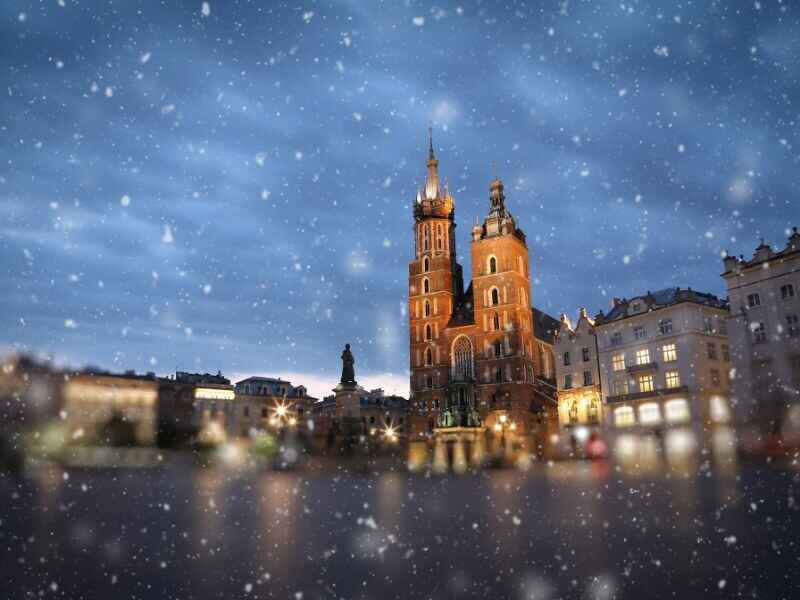
24. Ljubljana, Slovenia
Ljubljana is winter’s best kept secret.
The Ljubljanica river reflects light from tiny festive stalls lining Triple Bridge; the castle looms above, quiet but luminous. Street vendors sell warming potica, local cheeses, and herbal teas. The pedestrian centre is cozy and walkable—perfect for soaking up twinkling lights without the crowds.
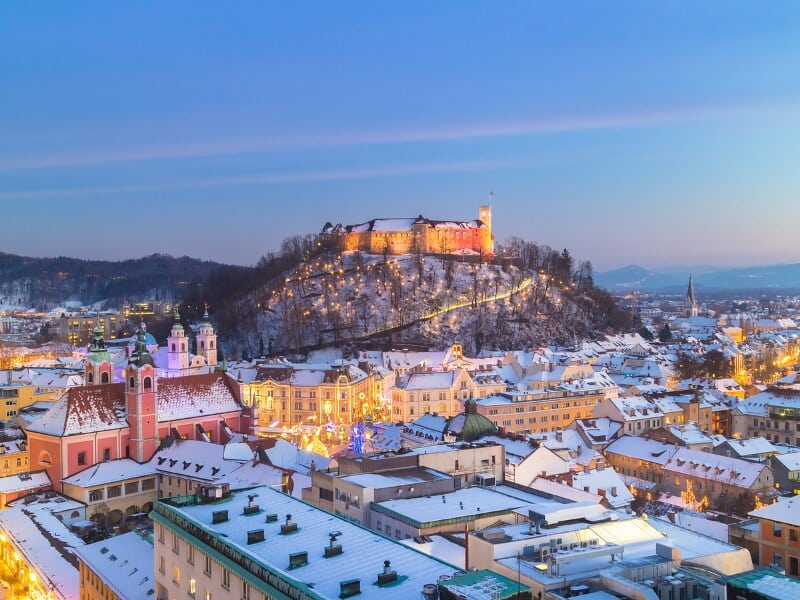
25. Bologna, Italy
Bologna in winter slows into something comforting and delicious. Markets selling fresh pasta, handmade tortellini, cured meats and cheeses fill airy loggias.
The scent of roasting chestnuts and rich ragù drifts across narrow alleys. Evenings are for wine bars by candlelight and bowls of tortelloni in broth—warm, simple and utterly satisfying.
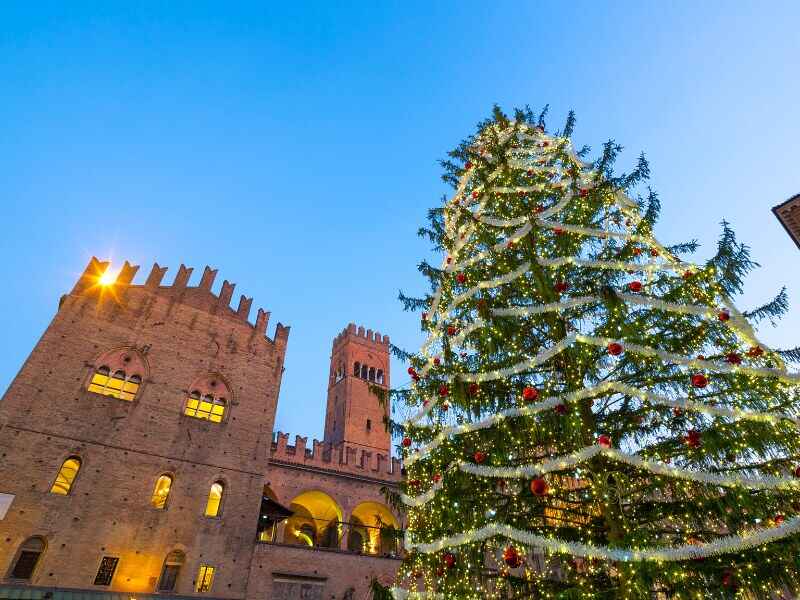
26. Yerevan, Armenia
Yerevan offers a different winter rhythm: cold, crisp, and festive in its own way. Republic Square is lit up with lights; Christmas and New Year markets showcase local crafts, carpets, dried fruits, nuts, and sweet pastries.
Cafés spill warmth onto snow-dusted sidewalks, and you’ll often find people sipping tea or coffee stained red with pomegranate and spices.
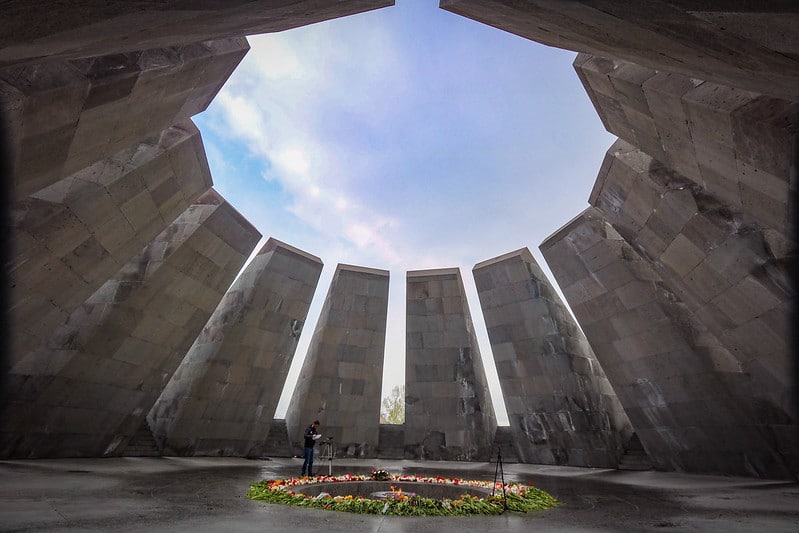
27. Copenhagen, Denmark
Even in the dead of winter, Copenhagen is cheery.
Tivoli Gardens transforms into a wonderland with lights, rides wrapped in garlands, and Danish pastries everywhere. Christmas markets pop up in Nyhavn and on the cobblestones near the cathedral. Drink gløgg, eat æbleskiver, and let that Scandinavian hygge melt away the cold.
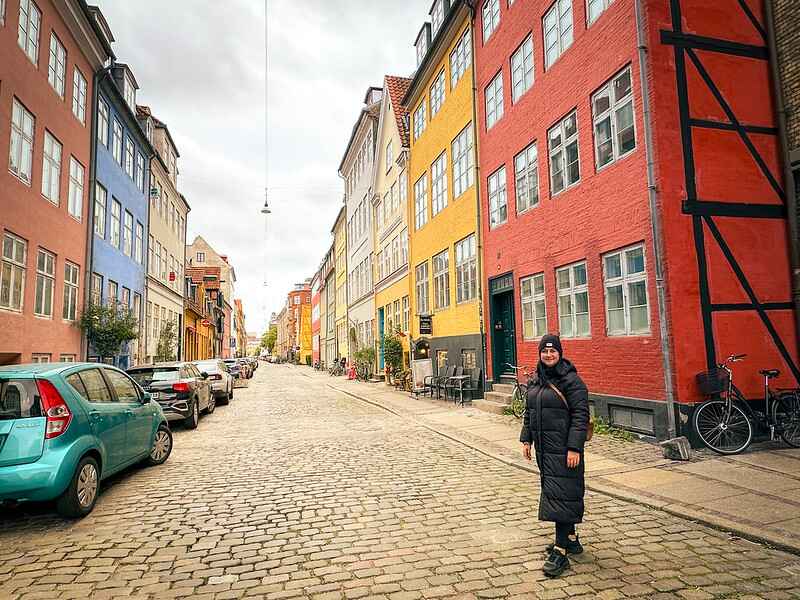
FAQ
Which are the best warm winter destinations in Europe?
Look to southern spots like the Canary Islands (Spain), Madeira (Portugal), Cyprus, Malta, and coastal Andalusia — where sunshine and mild temps persist through winter.
What are some cheap winter destinations in Europe?
Eastern Europe (Bulgaria, Romania), Portugal’s Algarve off-season, and parts of southern Italy (Sicily) offer lower prices, fewer tourists, and decent winter weather.
What are the best places to visit in December in Europe with warm weather?
Consider the Canary Islands, Malta, Cyprus, Crete, and southern Spain — ideal if you want December sun without leaving Europe.
Which places in Europe are family-friendly for a December getaway?
Madeira, the Azores, Canary Islands, and southern Portugal offer safe, calm settings, gentle winter temperatures, and kid-friendly sights.
Where is warm in Europe in January for a winter trip?
The Canary Islands, Cyprus, Malta, and southern coastal Portugal are your best bets for warmth, while places like Crete or Sicily might surprise you with sunny days.
What are the romantic winter getaway spots in Europe?
Madeira, the Amalfi Coast (if snow is unlikely), the Greek islands in shoulder season, and quaint towns in Portugal or Andalusia — quiet, photogenic, and cozy.

